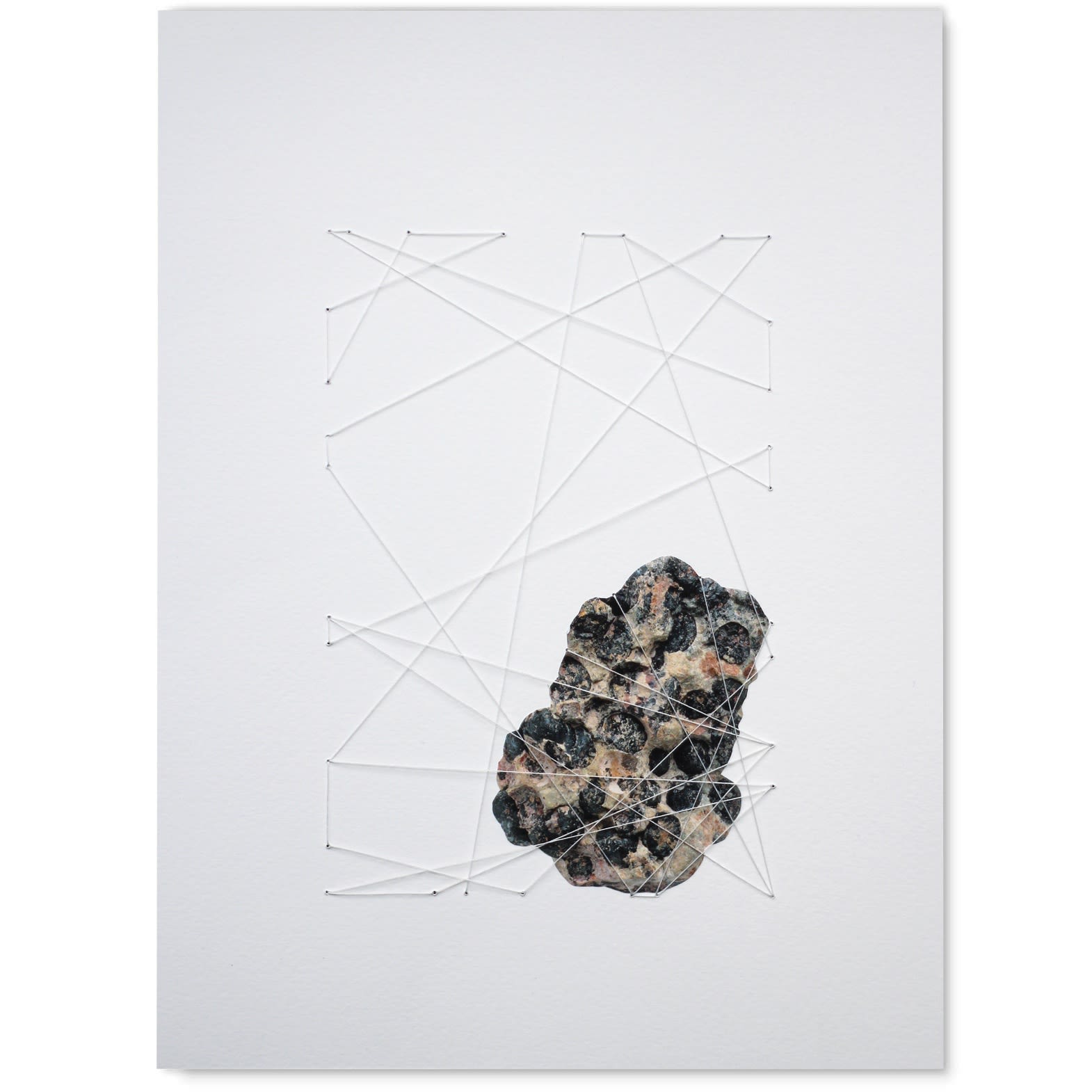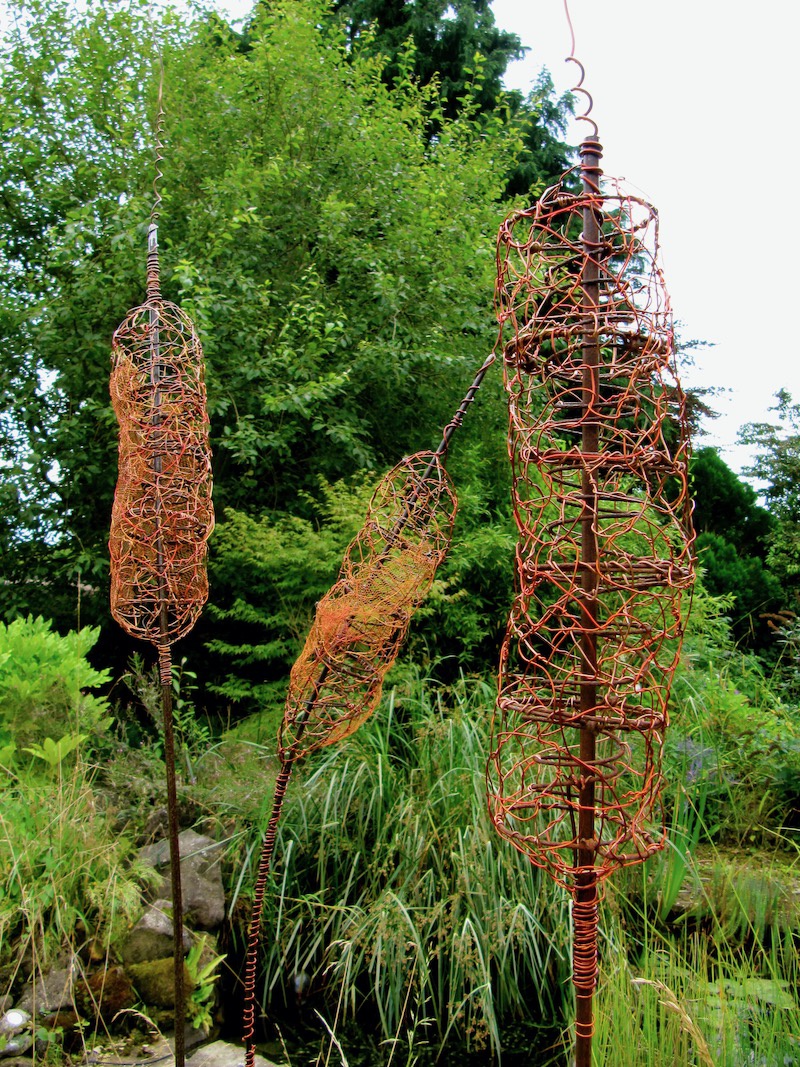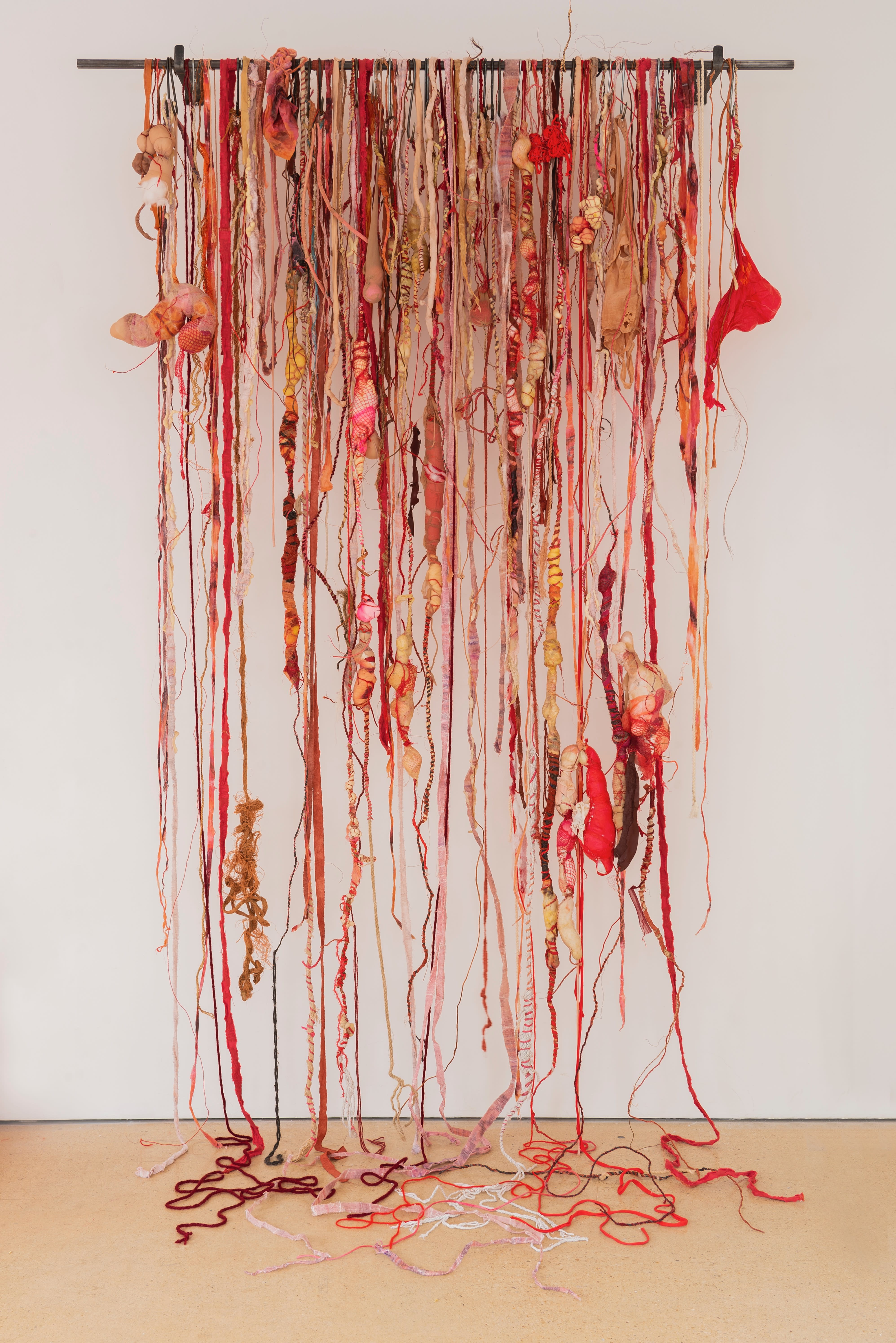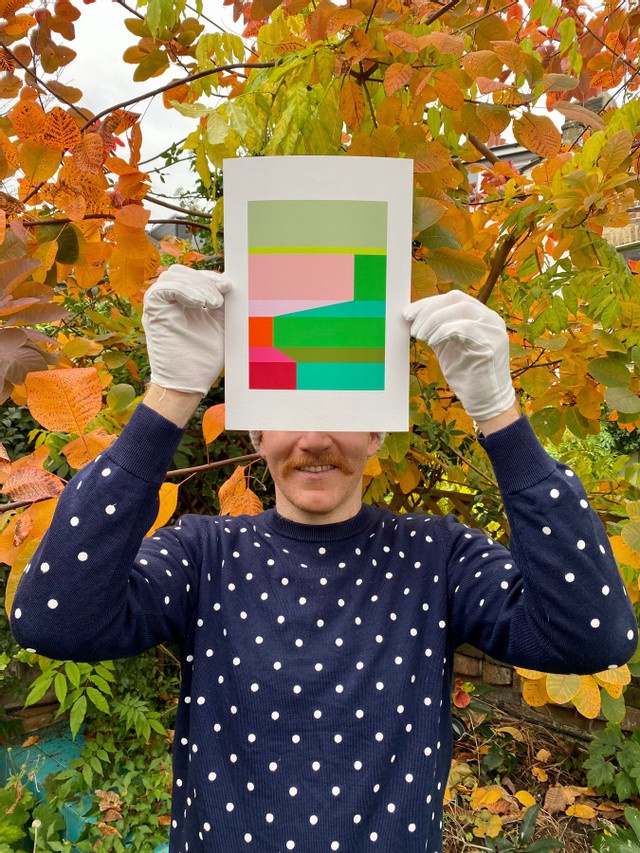
For the duration of Art For Your World, scrolling through #ARTFORYOURWORLD on Instagram has become part of my daily routine. A few weeks ago, I came across a magnificent photographic collage piece. It was a jungle scene in a deep pallet of greens, yellow, reds and blues. I was drawn into the depth of the piece and how it was reflective of the World’s jungles. The artwork’s whimsical collaged pieces were made up of painterly elements including angels, a figure picking fruit from a tree, a greyhound, and a green dragon.
The piece entitled Brazilian Jungle, After Rugendas (Repro) was posted by Brazilian artist Vik Muniz, who like many others has pledged to donate a percentage of the sale of the artwork to the Art For Your World campaign (see @benbrownfinearts).
Art For Your World has seen the completion of several events and projects that have brought awareness to the climate crisis as well as raised money for WWF and its key work in protecting our planet. Cultural institutions lit up green, eight renowned artists donated work to the Sotheby’s auction, Jenny Holzer’s Hurt Earth was projected onto the SEC Armadillo in Glasgow during COP26 as well as other buildings including the Tate Modern and Edinburgh Castle, and artists Bob and Roberta Smith, Chila Kumari Singh Burman and Heather Phillipson created a series of limited-edition prints. However, another key part of Art For Your World has been its Instagram campaign. Like Vik Muniz artists have been posting their work using #ARTFORYOURWORLD and pledging to donate a percentage of the sale to the campaign. This has successfully played a part in spreading the message that the art world needs and is acting in the fight against climate change.
I wanted to use this blog to spotlight some of the artists who have posted their artwork using #ARTFORYOURWORLD. I spoke to Marie-Louise Jones, Josie Clouting, Fiona Campbell, and Freddie Yauner about their work and practice and how nature and the environment plays a role within it.
Instagram: @vikmuniz
Marie-Louise Jones

Marie-Louise Jones Shale Analogue collage - encyclopedia printed image with thread on archival paper 300gsm Dimensions: 31cm x 23cm (2021)
As part of the Art For Your World campaign artist Marie-Louise Jones listed her Formation collages for sale. The striking works feature images of rocks and minerals with intricate thread woven over the top, creating geometric shapes. Talking about her Formation series she said:
‘Often, I respond to landscape and the geological in my work, and this particular series was conceived when I was on a nomadic journey spanning 15 months across 3 continents (Asia, Europe, and USA). I could carry only minimal belongings with me, yet I kept a small encyclopedia of rocks and minerals in my bag for the entire journey, from the limestone cliffs of Indonesia to the Aztec sandstone of the Mojave Desert. When I returned to the UK in 2019, I began to make the Formations - intimate works on paper from the rocks and minerals in the encyclopedia, combining them with thread to make analogue collages that explore the durable and the delicate, the material and immaterial through arrangements of points, lines, planes, and surfaces’.
Nature and the environment play an important role within Marie-Louise’s work. She told me:
‘My work thinks about matter, and material practices, which includes the ways we labor on, exploit, and interact with nature. Previous projects have explored the exploitation of natural resources; asteroid mining; urbanization and sprawling concrete jungles; the loss of connection to ancestral knowledge and nonhuman perspectives and realities.
Situated in the wider field of contemporary industry and ecology, my practice explores contrast and seemingly opposing forces. For example, the machine-made environments we inhabit in opposition to the uncultivated organic lines of the wild, uncivilized landscape, or the unceasing cycles of destruction and renewal. We are at a pivotal moment where centuries of destruction along the path of progress must now tip the balance into a period of renewal. There is a paradigm shift whereby societies are now actively questioning the ways in which we define value. In my work I try to create objects, sites or experiences to raise questions or act as catalysts for new ways of relating to and being in the world’.

Marie-Louise Jones Chromite Analogue collage - encyclopedia printed image with thread on archival paper 300gsm (2021)
Speaking about Art For Your World and why she is supporting the campaign Marie-Louise said ‘it’s something I'm passionate about, I don’t eat meat and am highly empathetic, but it’s not just about personal choices - climate change and the destruction of nature is the most urgent crisis of our time. It’s important for us all to become involved by supporting or raising awareness. The Art For Your World campaign has been a great catalyst for me to think about my future financial contributions too. Following on from this campaign I still want to pay the gift forward of any sales and will continue to give a percentage of all future works to projects of renewal, such as planting trees and restoring forests, or protecting endangered species and rebuilding habitats’.
Marie-Louise is a recent graduate from the MAFA program at Central Saint Martins. Her piece Redefined Horizons was selected as a finalist for the Ingram Prize 21’ and she was winning candidate for LabVerde Residency in the Amazon Rainforest which she will undertake in 2022. She has exhibited internationally including London, Venice, New York and Bali.
Instagram: @marielouise_jones
Josie Clouting

Josie Clouting Hydrangeas acrylic on canvas, 30 x 40cm (2021)
During the month of November, Artist Support Pledge turned virtually green and supported the Art For Your World campaign across its social channels. Artist Josie Clouting told me she first became aware of the Art For Your World campaign through an Artist Support Pledge post on Instagram. ‘I had already been trying to think of ways to raise awareness and funds for the climate crisis through my art practice, however I didn’t really know where to begin. When I saw the #artforyourworld I thought this would be a great starting point and a brilliant way for artists and art collectors to help the WWF cause’.
Josie posted four artworks (one every Sunday during November) for the Art For Your World campaign. ‘The paintings for sale are inspired by the Oxford Botanic Gardens and the Eden Project in Cornwall. Botanic greenhouses give us a glimpse into the huge variety and colour the natural world has to offer. The intuitive mark making and vibrant colours in the paintings aim to celebrate these magical places’.

Josie Clouting Chromatella acrylic on canvas, 53 x 71cm (2021)
The pieces are energetic and saturated with colour, clearly reflecting Josie’s response to the emotion and atmosphere she experiences when working within nature. When I asked Josie about her practice and how nature plays a part within in, she told me; ‘my practice is about the feeling of being immersed in the landscape. I like to paint en-plein-air as much as possible as I feel more connected to nature. I work in a variety of media; however, I mostly use acrylics and watercolours as I really love the immediacy and fast drying times. I am currently researching ways to make my practice more eco-friendly, for example swapping cotton canvas for linen and using more sustainably produced paints’.
‘Josie’s physical movements creating large expansive works are an expression of the energy she feels within the landscape’.
Since graduating from Norwich University of the Arts in 2012, Josie has exhibited her work across the UK including at the Royal Academy Summer Exhibition (2020) and at the Holly Bush Emerging Woman Painter Prize (2020).
Instagram: @josiecltg
Fiona Campbell

Fiona Campbell Bulrushes steel and copper (2021)
Fiona Campbell’s Bulrush sculptures caught my eye instantly when they appeared on my Instagram feed. The large sculptures have been delicately woven into the bulrushes forms and are ‘made from recycled materials: steel (including old bed springs) and copper wire. The woven forms are attached to a long steel rod. The rod prongs into the ground about 30cms deep. They last well outside - the steel rusts over time to a vibrant orange, harmonising with nature’.
I asked Fiona what encouraged her to support the Art For Your World campaign to which she said ‘my work is strongly linked to environmental issues, I have a passion for nature and deep concerns about climate breakdown, especially factory farming, wildlife trafficking and animal extinctions. This initiative struck a chord with me… I like the idea of encouraging art buyers to invest not only in the artists’ work but also the greater good - in this case WWF and the key areas they are supporting to help save our world’.

Fiona Campbell Glut recycled and found materials (2021) Photo by Mike Garlick
Fiona Campbell lives and works in Somerset. She has exhibited extensively throughout the UK in solo and group shows and has received numerous awards. She was an Ingram Prize 21’ Finalist and described her entry Glut as ‘a labour of love. Made in 2018 from found and recycled materials, it’s a wailing in response to environmental issues: waste, consumerism, factory farming, plastic oceans, animal extinctions… And the death of our dog. The materials speak of past lives, loss, textiles, craft; the forms reflect a duality of horror and tenderness’.
Alongside her practice, Fiona works with the community on collaborative art projects, holds residencies, runs courses and leads workshops. She was awarded an ACE Emergency Response Fund for her project Life in the Undergrowth that she developed during lockdown. ‘Inspired by small hidden worlds in her garden that often get overlooked, it became a circular process - garden feeding art and art feeding garden’.
Fiona describes herself as a visual artist, educator and curator.
‘I create mixed media artworks, often blurring boundaries between sculpture, drawing and installation. At the root of my practice is the notion of interconnectedness throughout nature, line as energy, life’s cyclical persistence and transformation. Environmental concerns about human exploitation of nature and over-consumption inform the content, taking my work into the realm of artivism. I am interested in tentacularity - linear life forms repeated micro to macro. I see these rhizomic connections as metaphors for life, vitalism and regeneration.
Materiality and process are central: the work is hand-made, labour-intensive and my use of found objects, discarded and recycled materials relates to our relationship with matter, nature, and ourselves. My approach is a form of suturing, a cathartic attempt to repair in response to world destruction. Collecting materials is intrinsic to the process, and I treat them as non-hierarchical. Throughout, there is an underlying theme of sustainability’.
Instagram: @fionacampbellartist
Freddie Yauner

Freddie Yauner Land Calorie Protein Archival Giclée print on Hahnemühle Photo Rag (2021)
It was impossible to miss Freddie Yauner’s artwork Land Calorie Protein when it appeared on my Instagram feed via #ARTFORYOURWORLD. Freddie, who reported that his Instagram feed was full of interesting artists trying to make a difference to the conversation about the climate crisis around COP, is selling an A4 edition of the larger Land Calorie Protein print that he created in November 2021. He told me:
‘Land Calorie Protein is essentially a copy of a graph which was created based on the research of Joseph Poore who works at Oxford University and his colleague Hannah Richie who is the lead contributor to Our World in Data, an extraordinary resource of visual data from the Oxford Martin School. Joseph’s research is about land use and food production. My piece is a colour block print, but it maps on top of a graph which shows us that 50% of all inhabitable land on the earth is used for farming and, of that 77% of global agricultural land is used for livestock production which is about 30% of the land surface of the planet. Yet meat and dairy only provides 18% of the calorie supply and 37% of global protein supply whilst crops take up 23% of agricultural land and provide 82% of global calories and 63% of global protein supply. It is fairly stark and startling evidence about the misuse of land in the world.
I really like how the statistics embedded in my print show that when the question is posed "how will we feed our growing population?" that it is very rarely considered that perhaps we simply use less land for growing animals - which are inefficient in terms of calorie and protein supply - and use more for plants. It's a contested area as food choice and food availability is tied up with culture and many other social determinants, so of course we should not apply the same blanket thinking to all people and countries - but the evidence is clear and a shift, which appears to be starting, needs to happen. Strange then that there was little focus on farming at COP. I am definitely not interested in vilifying the use of animals in farming, it seems to be a fairly essential part of maintaining soil health, but hopefully the print goes some way to creating something quite beautiful that reveals the extraordinary and uncomfortable truth behind the inefficiency and the excessive global land use for livestock production’.
Freddie’s work explores how the human drive for continual growth has impacted people and the planet. ‘I want to bring people into the unfamiliar, sometimes implicating myself or going to ridiculous lengths to shift viewers’ perspectives. I’m serious and funny, trying to make complex ideas or issues simple to digest’. He creates a breadth of work in which he applies different media for different subjects.
‘My practice has broadly always been fascinated with the notion of human progress and the misguided stances we take. I've spent many years running social enterprises so I’m really interested in how art and culture can support environmental and social change. Increasingly my work attempts to celebrate nature whilst unpicking human progress and at the same time exploring the cognitive dissonance that we all need to cope with being alive today – a slightly mad time. I make a lot of work using pollen. I make work where I parade around the world wearing a mirror on my face. I spend some time attempting to become William Morris and thinking about environmentalism. I’m part of Popeye collective which looks at food and farming and food systems in the world today and how plant-based diets might offer some solution moving forwards. The environment is a massive, part of everything I'm doing at the moment and it's exciting to see through Art For Your World many other artists are also doing the same and are focused on these pressing issues of our time’.
Freddie lives and works in London. His work has been exhibited and collected internationally and is included in the permanent collections at the Museum of Modern Art, New York, The Design Museum, London and The Israel Museum, Jerusalem.
Instagram: @freddieyauner
Written for Art For Your World by Ruth Connolly